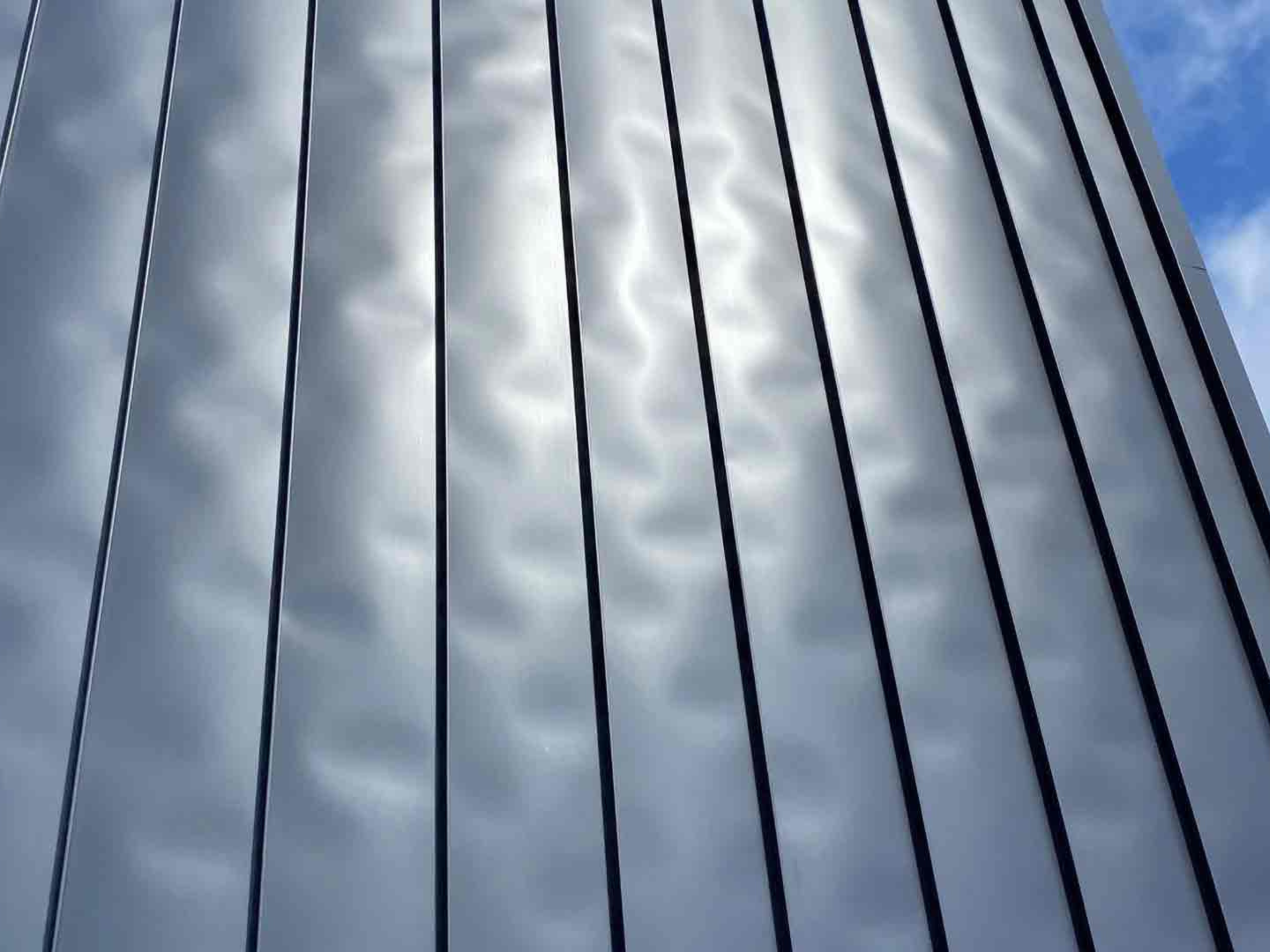
Oil canning is defined as visible waviness in the flat areas of metal roofing and wall panels. It can occur in any type of metal panel: steel, aluminum, zinc, or copper. While oil canning is typically cosmetic and doesn’t affect panel performance or durability, it can impact the visual quality of a project. The severity of oil canning can vary based on factors such as the panel’s width, thickness, and even the angle of sunlight hitting the surface.
Although oil canning can’t always be eliminated, there are several effective ways to reduce its appearance. Below are key strategies that designers, fabricators, and installers can implement to minimize the risk of oil canning on your next project.
1. Choose Panels with Stiffening Features
One of the most effective ways to combat oil canning is to select metal panels that are engineered with stiffening elements, such as:
- Striations
- Beads
- Ribs
- Pencil Ribs
These features break up the flat surface area, reducing light reflection and making any waves far less noticeable. At Metal Panel Systems, many of our panel profiles come standard with striation or rib options for this exact reason.
2. Opt for Thicker Metal Gauges
Thicker metal is more rigid and better at resisting deformation. Using lower gauge metal (thicker) can significantly reduce oil canning, especially on wide panel profiles.
3. Minimize Panel Width
Wider panels are more prone to oil canning due to increased flat surface area. Narrower panel profiles are inherently stiffer and show fewer visual distortions. When possible, select a narrow panel profile, especially for long runs or high-visibility areas.
4. Be Strategic with Color and Finish Selection
Dark and glossy finishes tend to exaggerate waviness, while lighter, matte, or textured finishes diffuse reflections and hide imperfections. When aesthetics are a top priority, consider choosing:
- Lighter colors
- Low-gloss or matte finishes
- Textured coatings
5. Ensure Proper Installation Techniques
Even the best-designed panels can exhibit oil canning if not installed correctly. Common installation-related causes include:
- Over-tightened fasteners
- Misaligned framing
- Inadequate thermal expansion allowances
Installers should follow manufacturer guidelines closely and avoid over-driving fasteners or clips. It’s also important to use slotted fasteners where thermal movement is a concern.
6. Use High-Quality Substrates and Framing
Panels conform to the surface they’re attached to. If the substrate or framing is uneven, warped, or inconsistent, the panel will reflect those imperfections. To minimize distortion:
- Use flat, consistent sheathing or decking
- Check that purlins and supports are aligned and level
- Inspect framing before panel installation begins
7. Work with an Experienced Manufacturer
It’s critical to partner with a metal panel manufacturer who understands oil canning and offers solutions. At Metal Panel Systems, we’re committed to helping our customers address oil canning concerns.
Conclusion
While oil canning may be a natural characteristic of metal panels, it doesn’t have to detract from the look of your project. By combining smart design choices, proper installation, and quality materials, you can drastically reduce the appearance of oil canning and ensure a clean, professional finish.
Need help choosing the right panel system for your next project? Contact us today and let our team assist you with expert guidance and high-performance products tailored to your needs.





Recent Comments